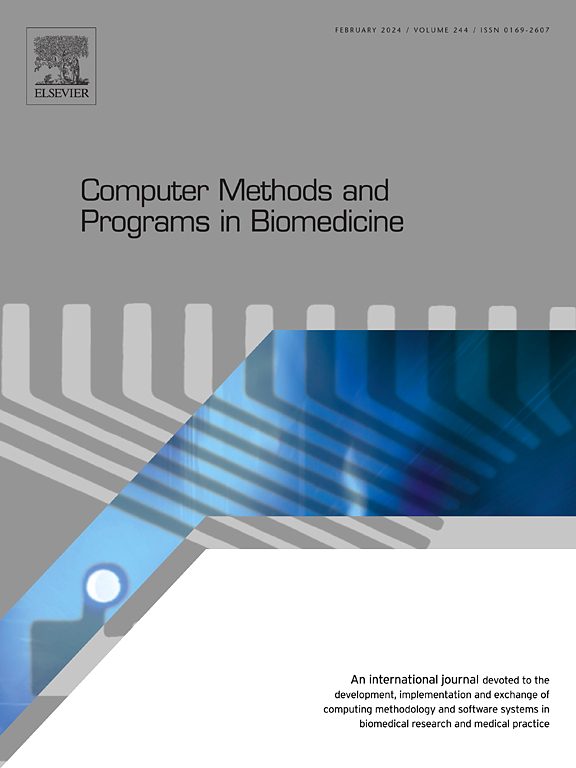设计Barrett肿瘤的计算机辅助检测系统:架构选择、训练策略和推理方法的见解
IF 4.8
2区 医学
Q1 COMPUTER SCIENCE, INTERDISCIPLINARY APPLICATIONS
引用次数: 0
摘要
背景与目的:巴雷特食管(BE)早期肿瘤的检测面临着巨大的挑战,因为病变在内镜下表现微妙。计算机辅助检测(CADe)系统有可能通过增强这些早期病变的识别和定位来帮助内窥镜医师。本研究旨在为BE瘤变检测有效的CADe系统的结构化设计和开发提供全面的见解,解决内镜成像的独特挑战和复杂性以及BE瘤变的本质。方法:我们对结构选择、训练策略和推理方法进行了广泛的评估,以优化用于BE瘤变检测的CADe系统。该评估包括10个骨干架构和4个语义分割解码器。评估的训练策略是具有自监督学习目标的特定领域预训练、数据增强技术、合并额外视频帧以及利用多专家分割真值的变体。评估推理方法包括各种模型输出融合技术和张sorrt转换。优化的模型与6个最先进的CADe系统进行基准测试,用于9个不同的测试集的BE肿瘤检测。结果:实验结果证明了纳入结构化设计考虑的影响,导致在专用验证集上可测量和增量的性能增益高达7.8%。这些贡献在特定领域的预训练和混合CNN-Transformer架构的使用方面尤为突出,这有利于鲁棒性和整体性能。通过这些设计选择优化的模型与现有的CADe系统相比取得了统计学上显著的改进,p值在p∈[0.0019,0.031]的范围内。它在分类和定位方面优于最先进的模型,比表现第二好的模型提高了12.8%。这些成果表明,在代表现实世界临床挑战的不同测试集上,峰值性能、泛化能力和稳健性得到了提高。结论:本研究为有效的CADe系统用于Barrett肿瘤检测的结构化开发提供了重要的见解。通过解决与内窥镜成像和巴雷特瘤变相关的具体挑战,该研究表明,仔细考虑结构选择、训练策略和推断方法可显著提高CADe性能。这些发现强调了定制设计和优化在开发稳健和临床有效的CADe系统中的重要性。该代码可在https://github.com/BONS-AI-VCA-AMC/Insights-CADe-BE上公开获取。本文章由计算机程序翻译,如有差异,请以英文原文为准。

Designing a Computer-Aided Detection system for Barrett ’s neoplasia: Insights in architectural choices, training strategies and inference approaches
Background and Objective:
Detecting early neoplasia in Barrett’s Esophagus (BE) presents significant challenges due to the subtle endoscopic appearance of lesions. Computer-Aided Detection (CADe) systems have the potential to assist endoscopists by enhancing the identification and localization of these early-stage lesions. This study aims to provide comprehensive insights into the structured design and development of effective CADe systems for BE neoplasia detection, addressing unique challenges and complexities of endoscopic imaging and the nature of BE neoplasia.
Methods:
We conduct an extensive evaluation of architectural choices, training strategies, and inference approaches to optimize CADe systems for BE neoplasia detection. This evaluation includes 10 backbone architectures and 4 semantic segmentation decoders. Training strategies assessed are domain-specific pre-training with a self-supervised learning objective, data augmentation techniques, incorporation of additional video frames and utilization of variants for multi-expert segmentation ground-truth. Evaluation of inference approaches includes various model output fusion techniques and TensorRT conversion. The optimized model is benchmarked against 6 state-of-the-art CADe systems for BE neoplasia detection across 9 diverse test sets.
Results:
The experimental results demonstrate the impact of incorporating structured design considerations, leading to measurable and incremental performance gains of up to 7.8% on dedicated validation sets. The contributions particularly stand out for the domain-specific pre-training and the use of a hybrid CNN-Transformer architecture, which benefits robustness and overall performance. The model optimized through these design choices achieves statistically significant improvements over existing CADe systems, with -values in the range . It outperforms state-of-the-art models in classification and localization, with improvements of up to 12.8% over the second-best performing model. These gains demonstrate enhanced peak performance, generalization capabilities, and robustness across diverse test sets representative of real-world clinical challenges.
Conclusion:
This study provides critical insights into the structured development of effective CADe systems for Barrett’s neoplasia detection. By addressing the specific challenges associated with endoscopic imaging and Barrett’s neoplasia, the study demonstrates that careful consideration of architectural choices, training strategies, and inference approaches results in significantly improved CADe performance. These findings underscore the importance of tailored design and optimization in developing robust and clinically effective CADe systems. The code is made publicly available at: https://github.com/BONS-AI-VCA-AMC/Insights-CADe-BE.
求助全文
通过发布文献求助,成功后即可免费获取论文全文。
去求助
来源期刊

Computer methods and programs in biomedicine
工程技术-工程:生物医学
CiteScore
12.30
自引率
6.60%
发文量
601
审稿时长
135 days
期刊介绍:
To encourage the development of formal computing methods, and their application in biomedical research and medical practice, by illustration of fundamental principles in biomedical informatics research; to stimulate basic research into application software design; to report the state of research of biomedical information processing projects; to report new computer methodologies applied in biomedical areas; the eventual distribution of demonstrable software to avoid duplication of effort; to provide a forum for discussion and improvement of existing software; to optimize contact between national organizations and regional user groups by promoting an international exchange of information on formal methods, standards and software in biomedicine.
Computer Methods and Programs in Biomedicine covers computing methodology and software systems derived from computing science for implementation in all aspects of biomedical research and medical practice. It is designed to serve: biochemists; biologists; geneticists; immunologists; neuroscientists; pharmacologists; toxicologists; clinicians; epidemiologists; psychiatrists; psychologists; cardiologists; chemists; (radio)physicists; computer scientists; programmers and systems analysts; biomedical, clinical, electrical and other engineers; teachers of medical informatics and users of educational software.
 求助内容:
求助内容: 应助结果提醒方式:
应助结果提醒方式:


